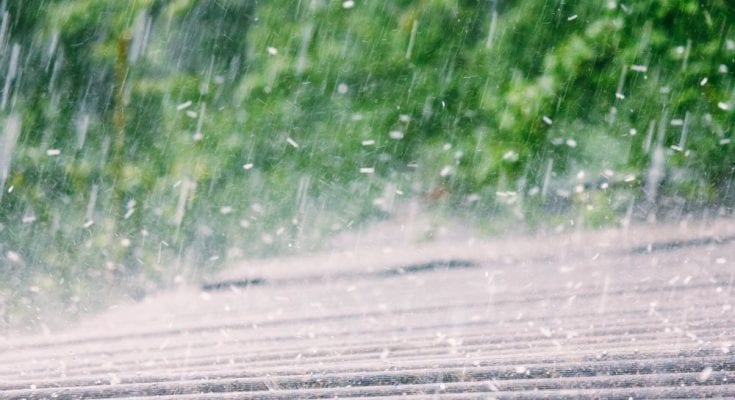We’ve all experienced a hailstorm before—they often come unexpectedly alongside thunderstorms. One minute, there’s the gentle pit-pattering of rain against the windows panes; then suddenly, there’s the thunk-thunk-thunk of hailstones pelting against the side of your home.
You probably have a good understanding of what hail is: hailstones are clumps of frozen water created by updrafts. However, did you know that the sizing system for hailstones uses unique terminology or that hailstorms can cause even more damage than hurricanes? Here are three things you didn’t know about hail.
More Than One Type
Hail forms when droplets of water freeze in the upper regions of thunderclouds. When a hailstone becomes too large for the cloud to hold, it falls to the ground at high speeds.
There are two types of hailstones that this process can form. Clear-colored hail is called a wet growth, which forms when water accumulates around an ice nucleus and slowly freezes to it. Hailstones with a foggy appearance classify as dry growths, which form when water freezes the second it encounters the ice nucleus.
A Unique Sizing System
You’ve probably heard people refer to hailstones as “dime” or “baseball” sized before. These comparisons are accurate—in fact, they’re so accurate that the National Weather Service uses them as official terminology.
The NWS uses common household objects to denote the size of hail. For example, hail with a 1/4-inch diameter is pea-sized, a 1-inch diameter is quarter-sized, a 2-inch diameter is the size of a hen egg, 3 inches is a softball, and 4 inches is the size of your average grapefruit. Hailstorms that produce hailstones quarter-sized or larger are considered severe.
As Devastating As Hurricanes
Everyone knows that hailstorms can create devastating amounts of damage, especially to homes. Hailstones can dent roofs, break windowpanes, chip siding, destroy gardens, pummel cars, and more. But one thing you didn’t know about hail is that it can cause more harm than even the most destructive natural disasters.
A single hailstorm can cause millions of dollars in damage. And with over 5,000 hailstorms occurring in the US annually, the numbers start to add up. On some occasions, hail has even caused more harm than hurricanes. For example, in 2012, Hurricane Sandy resulted in over $25 billion in insurance claims. That same year, hail and wind damage resulted in $23.5 billion in claims.



